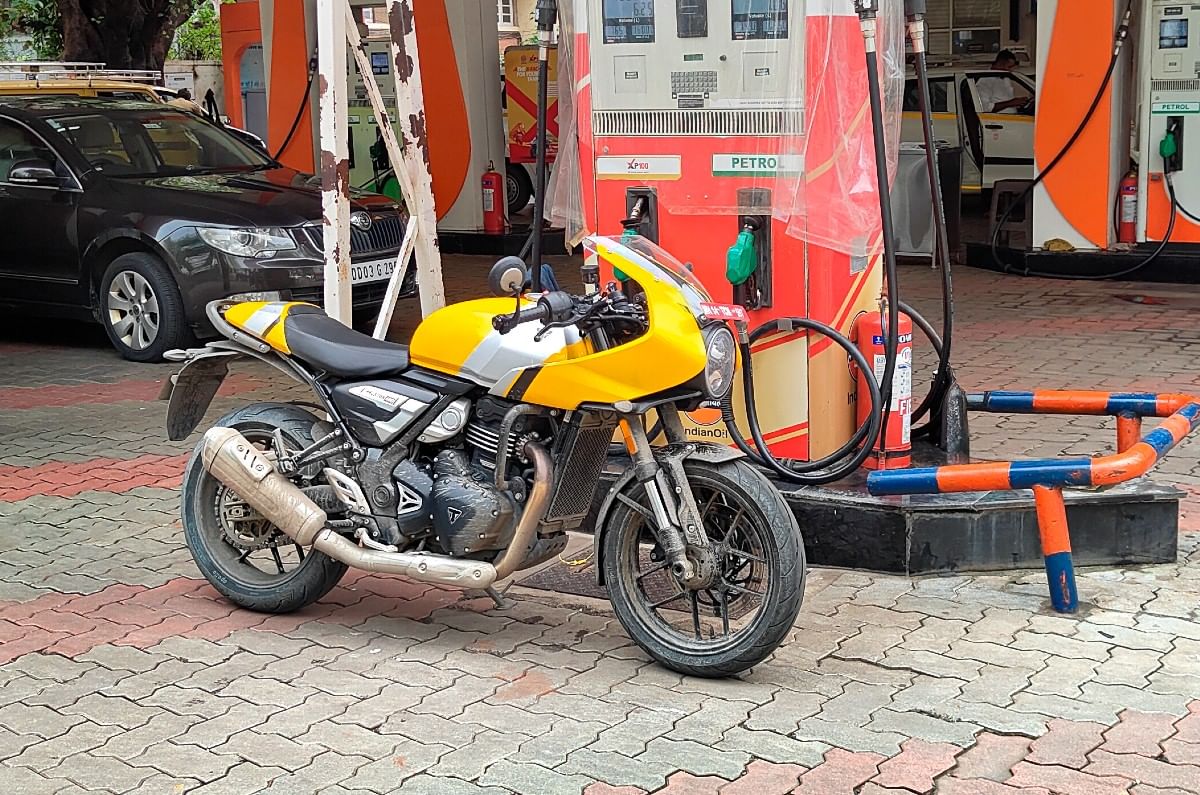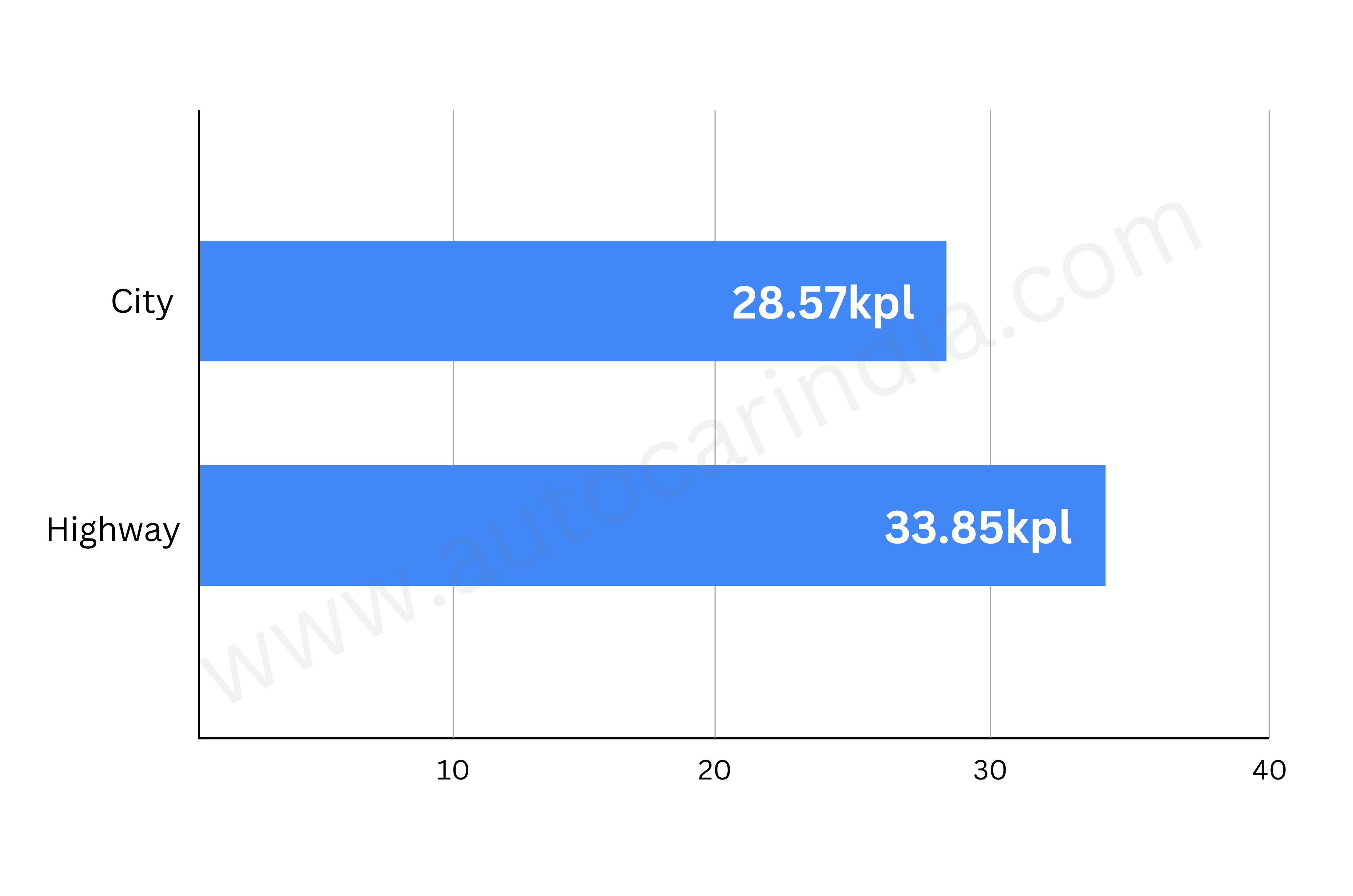
The Thruxton 400 is a café racer, and is much more than just a Speed 400 with a fairing. It features a slightly more powerful engine, producing 42hp and 37.5Nm, which makes it the most powerful of all the Bajaj-made Triumph 400s. The bike also revs 1,000rpm higher (Redlines at 10,200rpm) and has a smaller rear sprocket than the Speed 400. Here’s a look at the Thruxton 400 mileage numbers from when we tested the bike.
Triumph Thruxton 400 real-world fuel efficiency
Thruxton managed 28.57kpl in the city, 33.85kpl out on the highway
For this test, we ran the Thruxton on the highway for just over 60km, after which the bike needed 1.79 litres of fuel to fill its tank again. Therefore, we arrived at a highway fuel economy number of 33.85kpl for the Thruxton 400
Once that was done, we ran the Thruxton through the traffic-riddled roads of Mumbai for 50km, after which the fuel tank needed 1.75 litres. Thereby, we achieved a city fuel efficiency figure of 28.57kpl.
Triumph Thruxton 400 fuel economy analysis
The Thruxton is a little more work to ride in the city compared to the Speed 400
As mentioned above, the Thruxton 400 has a slightly more powerful engine than the Speed and Scrambler 400 X. It achieved a decent 28.57kpl in the city, which is around 2kpl less than the Speed 400 in the city. The motor in the Thruxton 400 felt tractable enough to cruise at 40kmph in fourth gear, thereby necesitating fewer throttle openings. However, do bear in mind that the committed riding position will be quite a struggle when encountering heavy traffic.

Out on the highway, the bike felt relaxed thanks partly to the taller gearing and partyl to the higher rev range, and in fact, gave us minimally better mileage than the Speed 400. Since we have tested the mileage for all of the Triumph 400s in similar conditions, here is how they fare against each other:
| Triumph 400cc models mileage tested | ||||
|---|---|---|---|---|
| Mileage | Thruxton 400 | Speed 400 | Speed T4 | Scrambler 400 X |
| City | 28.57kpl | 30.67kpl | 32.15kpl | 28.07kpl |
| Highway | 33.85kpl | 33.57kpl | 38.86kpl | 34.71kpl |
Autocar India’s fuel-efficiency testing
Our fuel-efficiency testing routine starts by first brimming the tank and ensuring the bike is running the manufacturer’s recommended tyre pressures. The bike is then ridden on fixed city and highway routes, where we maintain average speeds that best mimic real-world scenarios, as well as keeping speed limits in mind. The payload on the bikes is kept constant by balancing rider weights and ballast, ensuring consistency across different vehicles and riders. At the end of the test cycle, the fuel tank is once again filled to the brim, giving us an accurate figure of how much fuel has been consumed against the trip meter reading.

